Phylogenetics, systematics and ecology of Diaporthales
Project leader: Priv.-Doz. Mag. Dr. Hermann Voglmayr
Diaporthales (Ascomycota, Sordariomycetes) occupy a wide range of ecological niches which appears to be connected with the high species biodiversity observed in many diaporthalean lineages. Most are considered either pathogens or saprobes of land plants, and many are common endophytes of living plants, often showing a high degree of host specificity. Several species are serious threats to forest trees, especially if introduced to new areas, most notably the chestnut blight (Cryphonectria parasitica) devastating North American forests dominated by chestnut. They are therefore of great economic concern.
The Diaporthales are pleomorphic fungi with sexual and asexual morphs comprising about 160 genera and 1200 species. However, a sound phylogenetic classification frame of families and genera for the whole order is largely missing, and many genera are in need of taxonomic revision. Recent studies on a few plant-associated diaporthalean genera revealed numerous undescribed species as a result of high host specificity, indicating that biodiversity is inadequately known.
Therefore, this project aims to investigate the following important objectives:
a. A comprehensive multigene phylogeny of a representative taxon sampling of Diaporthales based on selected nuclear ribosomal and protein-coding genes. This provides the basis for a robust revised familial as well as generic classification, but also for revealing evolutionary patterns like host ranges and evolutionary diversification.
b. Detailed investigations on speciation, species concepts and host-parasite radiation of selected lineages of Diaporthales, based on multigene phylogenies involving several nuclear markers.
c. Taxonomic revisions from family down to species level according to the results of the phylogenetic analyses.
d. New species revealed during the investigations are formally described after thorough morphological, pure culture and molecular studies.
e. Clarification of the connections of sexual and asexual morphs.
The investigations are supported by FWF project P 27645-B16
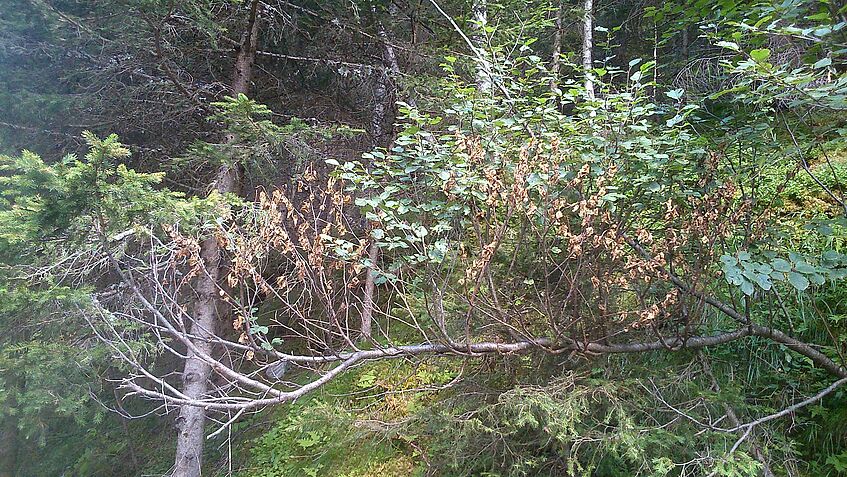
Alnus viridis branch with fungal pathogen
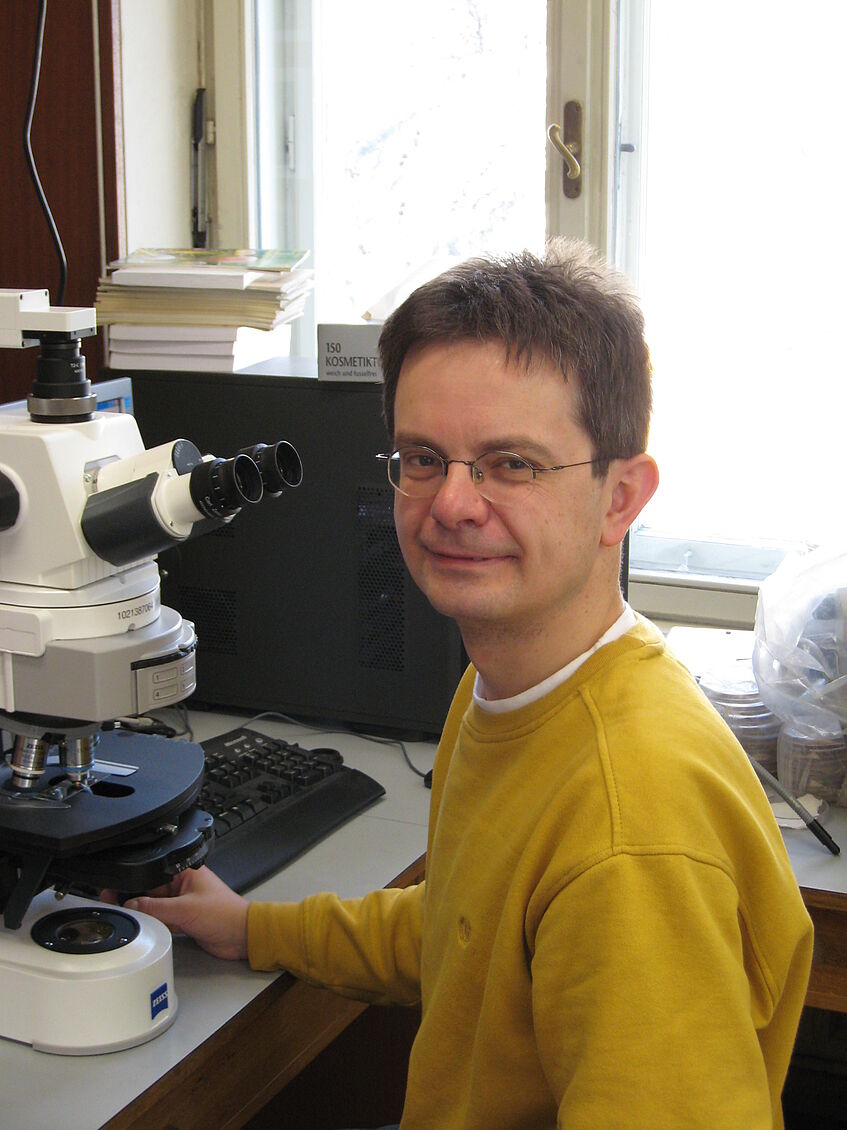
Hermann at the microscope

Spores
Survey of the biodiversity of dung fungi in the wild cattle enclosure Lainzer Tiergarten
In Austria, there have been only very few surveys of fimicolous fungi to date. So far, there are also no studies from Austria that correlate fungi on cattle manure with dung beetles, or to estimate the effect of veterinary measures on the species diversity of fungi. It is also interesting to clarify how many species belong to the obligate fimicolous fungi, and how many to the facultative fimicolous (subfimicolous). The occurrence and spread of fimicoles is influenced by macro- and microclimatic factors. The ambient temperature, humidity, lighting as well as the composition of the substrate play a decisive role in the growth of the species. The adaptation of fimicolous fungi to such a specific substrate containing large amounts of carbohydrates and proteins as well as more complex substances (cellulose and lignin) ensures that we witness the succession of different classes of fungi according to a pattern based on the temporary availability of certain nutrients or the ability and speed of spore germination. Zygomycetes (Pilobolus, Mucor) appear first after 2-4 days, followed by the ascomycetes (6 to 12 days) (Ascobolus, Saccobolus), which break down cellulose, and the basidiomycetes (10 to 30 days) (Coprinus s.l.), which decompose mainly lignin. The spores of many fimicoles have to pass through the digestive tract of a host to be activated, i.e. to germinate together with the faeces after excretion.
As far as the general distribution is concerned, in Austria, besides cosmopolitan and temperate species, boreal species can also occur in the Alps. In addition to regular inspections of the pasture area for the purpose of collecting dung samples and recording the macroscopic fruiting bodies present on site, dung fungi are also recorded using the wet chamber method. The wet chambers are incubated and examined daily or sometimes twice a day (if Coprinus species are present, as they show rapid maturation overnight) using a stereomicroscope. Usually a wet chamber is observed for one month, sometimes one and a half months, exceptionally two months for slow maturing species (e.g. some Arnium).
Scientific questions:
1. which fungal species occur in the manure samples?
2. How are they associated?
3. How are these fungal communities associated with the dung beetles?
4. Are there invasive dung fungus species?
5. Are there species with a possible national responsibility?
6. What is best practice for the conservation of rare bovine dung fungi species?
Interesting findings are investigated genetically using barcoding and next generation sequencing.
Biodiversity, systematics, ecology and distribution of macromycetes in Eastern Austria
Project leader: Irmgard Krisai-Greilhuber
Biodiversity, systematics and ecology of selected macromycetes (Agaricales, Boletales, Pezizales) are investigated. Long-term observations on fungal biodiversity and succession in several different pastures and meadows. In addition, in collaboration with the Austrian Mycological Society, mapping of macromycetes in Eastern Austria is in progress. These data will be important for further studies on threatening and conservation biology of macromycetes and have already been used for proposals to include macromycetes in the Bern Convention.
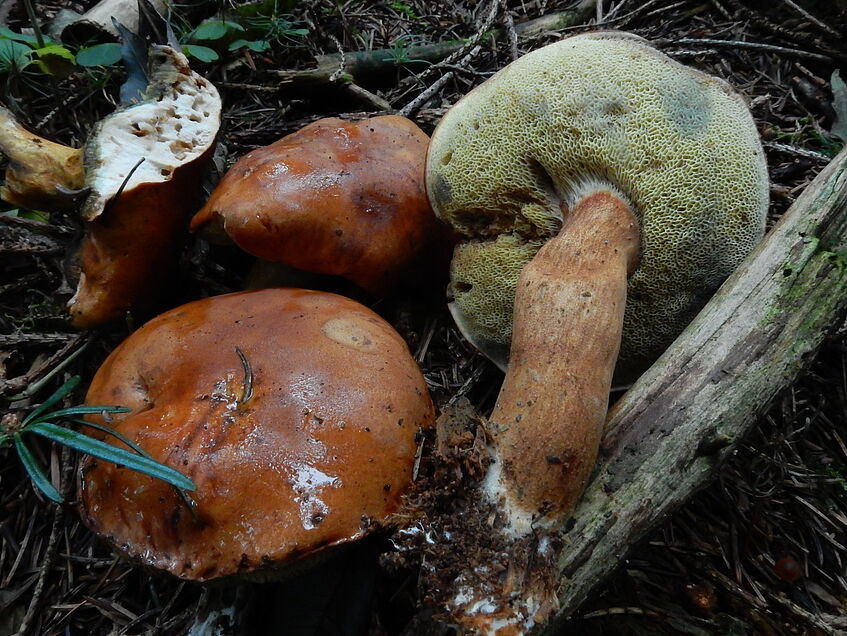
Imleria badia
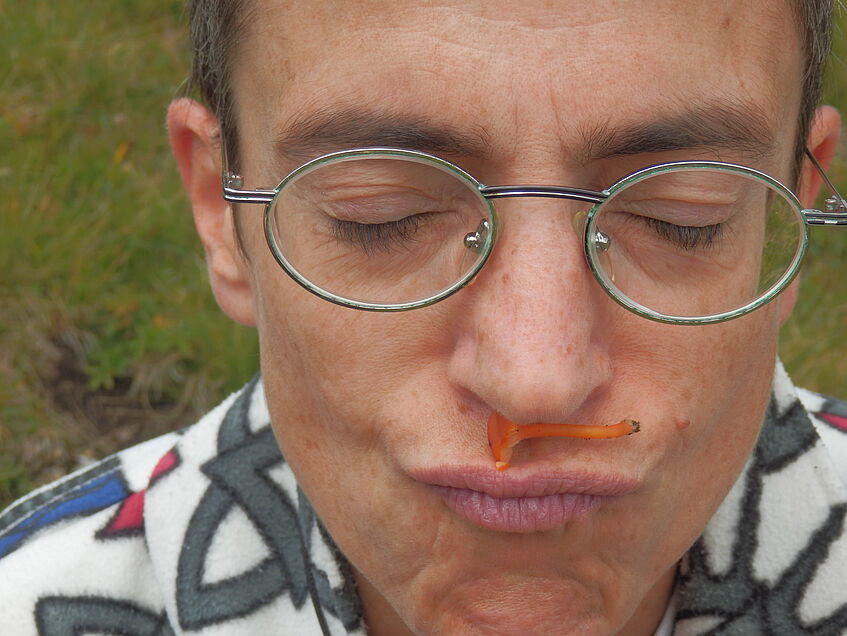
Irmgard smelling a waxcap. Foto: Uschi Österle
Species Protection Project Mushrooms in Upper Austria
The aim of this project, carried out together with the Austrian Mycological Society, is to comprehensively deal with the protection situation of fungi in Upper Austria, with special emphasis on site protection (particularly valuable habitat types or habitats), public relations work, focussing of funding on habitats rich in mushrooms and on selection of search areas.
Funded by the nature conservation department of the province of upper austria.
Phylogenetics of corticolous early incidence Dothideomycete
Project leader: Walter Jaklitsch
Integrating described fungi into their phylogenetic tree of life is far leaping behind the detection of fungi in the environment by modern sequencing techniques in ecological studies. Insertion of the latter organisms that are solely known from ITS sequences and naming them is hampered by the numerous gaps still present in current trees based on molecular phylogeny.
The project defined here aims at filling some of the gaps in the phylogeny of the Ascomycota, in particular within the Pleosporales of the Dothideomycetes. As this is a large order, the study is limited to fungi that form fructifications in bark of trees and shrubs early after death of the respective plants. Such fungi are of broad interest, because they may be primary invaders and causal agents of plant death or secondary invaders and saprotrophs. In particular the study is concentrated on the family Pleomassariaceae and the genus Valsaria, where the proposer has already comprehensive data, and the family Cucurbitariaceae, where little is known from a molecular perspective, but where good morphological information is available, still a large number of additional species and a splitting into several genera may be expected.
The main activities of the project include therefore an analysis of Cucurbitaria primarily based on teleomorphs on the generic and species level, with respect of biodiversity in Europe, especially on the complex host family Leguminosae, phylogenetic structure, and relationships with anamorphs, which will be assessed by their formation in culture and by sequencing of putative anamorphs associated with teleomorphs on the natural hosts. The taxonomy of the species will be clarified and adapted to the new regulations as defined in the drastically altered new International Code of Nomenclature for algae, fungi, and plants (Melbourne Code, ICN). In addition, the postulate that abundant fructifications on recently dead or partly still living plant parts may indicate endophytic lifestyle will be assessed in this project using model species of Cucurbitaria.
Other genera of the Pleosporales, particularly such that are often confounded with Cucurbitaria or which are difficult to define and strongly call for clarifications in order to provide for a better understanding of phylogenetic and evolutionary relationships of pleosporalean fungi, are planned to be included in the study, depending on availability and residual time and work capacity left by the activities defined above. The include genera like Chaetoplea, Cucurbidothis, Fenestella, Karstenula or Teichospora, and those where sequence information has been accumulated recently in the lab of the proposer such as Melanomma, Ohleria, Requienella or Thyridaria.
Representative cultures will be preserved in a publicly accessible strain collection for future research in other disciplines. Essential barcoding information will be provided.
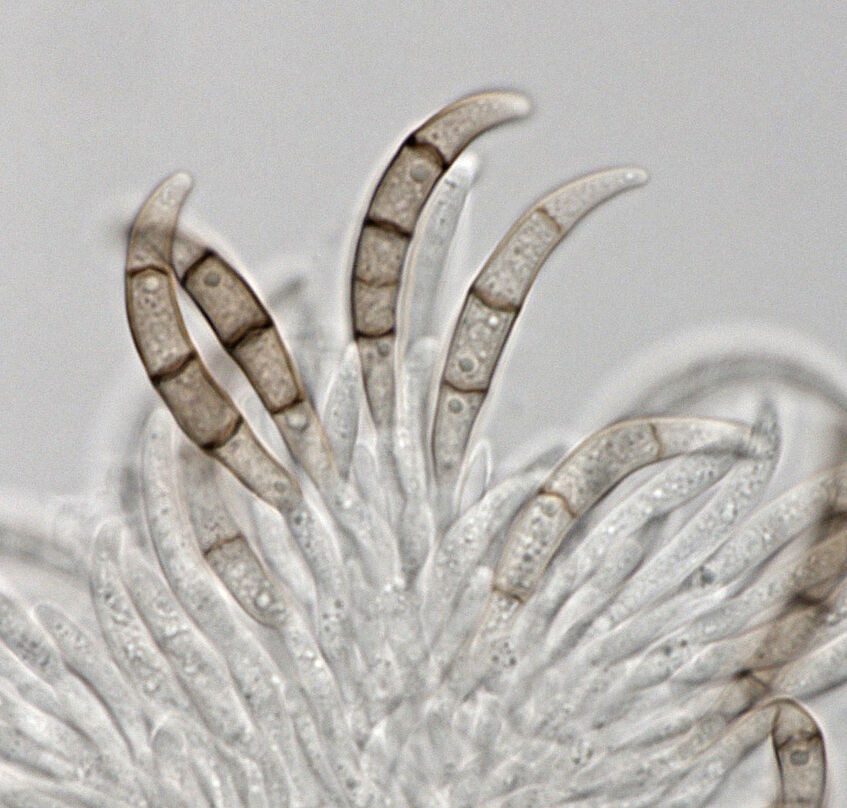
Spores

pyrenomycete ascomata

Walter Jaklitsch
ABOL – The Austrian Barcode of Life
ABOL is a biodiversity initiative generating and providing DNA-Barcodes of all species of animals, plants, and fungi recorded from Austria. Our research group is involved in barcoding basidiomycetes and coordinating barcoding of fungi from all taxonomic groups in close collaboration with the university of Graz. First results are available, e.g. in the genera Daedaleopsis and Hypholoma. This huge project is supported by the Austrian Ministry of Science.

Hypholoma capnoides - barcoded
Ethnomycological studies on mushroom knowledge in Austria
We are interested in qualitative and quantitative ethno-mycological studies, as were, e.g., performed in 2015 in the diploma thesis of Lisa Aigner to survey the knowledge about mushrooms as well as the collecting behaviour of the population of the Waldviertel (Austria), Altogether 98 persons participated in the study, additionally, three interviews with local experts of fungi were added. We investigated the origin of knowledge about fungi, collecting behaviour, knowledge about edible and toxic fungi, their possibility of confusion and legal backgrounds. Furthermore, the study focused on the social impact of the nuclear explosion in Chernobyl that took place in 1986; on average people quit collecting mushrooms for two to three years.The study participants were divided into three different age categories: children and teenagers, young adults (grown up with internet), adults (grown up without internet). Adults showed the best results. Altogether 41 edible mushroom species were mentioned, of which 26 were also collected. Boletus edulis, Cantharellus cibarius and Macrolepiota procera were the three most-known and also most-collected species. The survey revealed the great importance of the older generation for transfer of knowledge of mushrooms as natural forest products as they were the best informed.
Another study dealt with local vernacular names of three important mushroom species in Austria. More than 300 names were recorded.
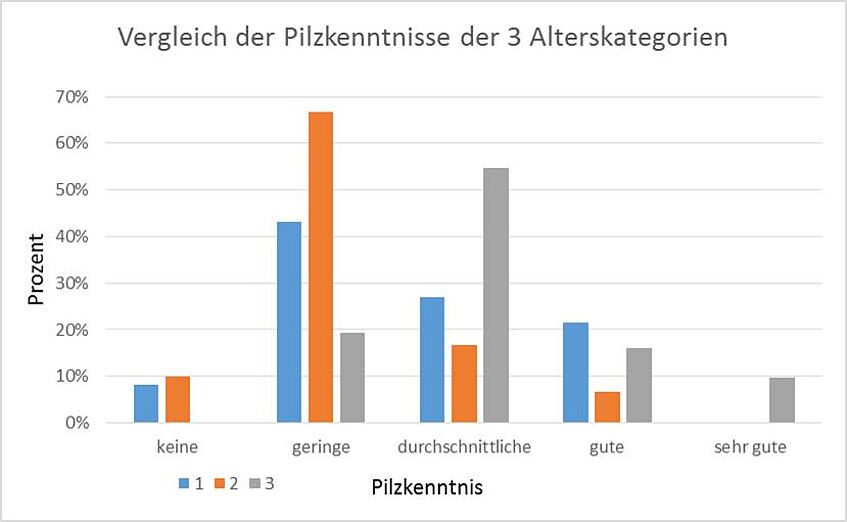
Mushroom knowledge, (c) Aigner Lisa
Red List of Endangered fungi in Austria
Currently a new edition of the Red List of Endangered fungi in Austria is underway.It is based on a first overall list of fungi found in Austria so far and comprises Basidiomycota except of rust fungi and smuts, and cup fungi (Pezizales) from the Ascomycota, i.e. "macromycetes" The overall list contains a total of 4,450 fungal taxa, thus documenting the enormous fungal biodiversity in Austria. It is based on the "Database of Mushrooms of Austria" with exactly 475.013 records from 13,652 localities in Austria and from 443 data sources (September 2016). Less than 1,000 species of mushrooms (21%) are „very common“ in Austria, ca. 1,700 species (38%) are" widespread to moderately frequent ", ca. 1,300 species (30%) "rare" and nearly 500 species (11%) show only one record. Approx. 1,300 species (= 29%) are considered to be at high risk or threatened with extinction, further 790 species (= 17%) are considered as potentially endangered. The current red list therefore covers total of 2,086 species (= 46%). Project supported by the European Union, the state and federal states of Austria.
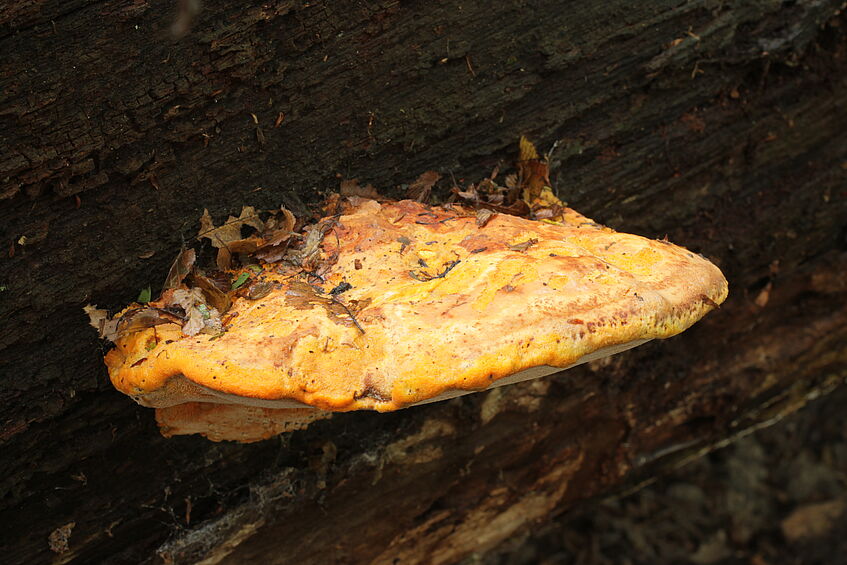
Aurantioporus croceus - critically endangered species in Europe. Foto: Alexander Urban

Rapid morphological and genetic detection of ingested toxic fungi
We are involved in rapid identification of ingested toxic fungi in collaboration with the Vergiftungsinformationszentrale (Austrian center of Intoxications). Protocols for rapid direct PCR-based detection of fungal traces in a variety of complex samples for Amanita phalloides have been developed and development of further tests is underway, e.g. for other deadly poisonous Amanita species.
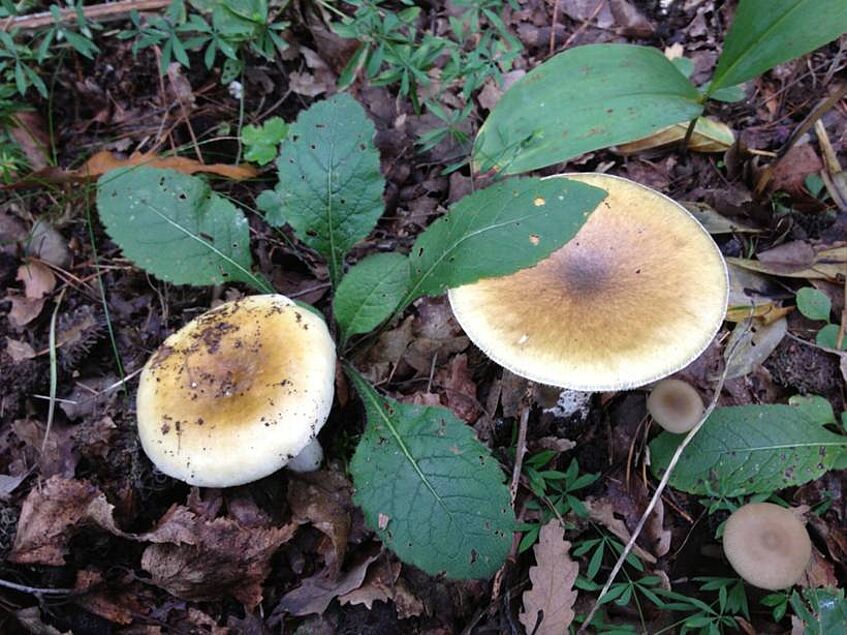
Russula heterophylla - edible (left) and Amanita phalloides - deadly poisonous (right). Foto: I. Greilhuber
ClimFun
International cooperation exists on fungal phenology and climate change with the European researchers group ClimFun. The project ClimFun addresses the effects of climate change on the phenology, production and distribution of fungal species and their substrate usage. Dated fungal field records from several European countries have been collected and are used for revealing already existing trends and for future modelling.

Pycnoporellus fulgens - increasing in Austria. Foto: I. Greilhuber
